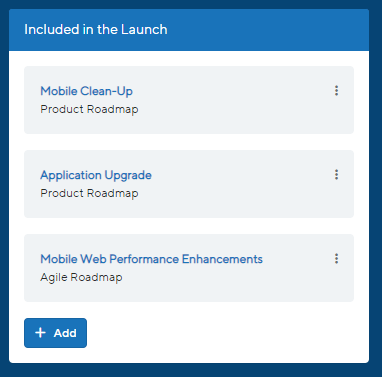As a product marketer, I’ve run a good number of launches throughout my career. Product launches. Feature launches. Some were quite big, requiring a tidal wave of activity that spanned departments. Others were small, perhaps only involving an entry in the biweekly release notes.
Regardless of size and scope, launches always turn out better when you involve the product team. It should be a given, considering that what you’re launching is a direct result of the research, prioritization, and planning the product team did months prior. So much of the knowledge you need to launch a product—whether you’re a salesperson, a customer success rep, or a product marketer—is in the minds of the product team.
But time and time again, we hear from product teams that they don’t have great visibility into what happens during a launch. Many, in fact, describe a siloed approach to launching products. Product teams may be responsible for the planning and development of the product.
But the launch of it? That’s someone else’s job.
This was one of the significant challenges we set out to solve when we built our new go-to-market tool within ProductPlan, Launch Management. We wanted to create a single space to plan your launch, where the product strategy could flow from roadmap to execution. We also wanted to give product people complete visibility into all the activities required to launch a new product or feature.
So that begs the question. What are the benefits of having your launch plan in the same tool as your roadmap? Read on to find out.
For those managing the launch, visibility creates the opportunity for better strategy and launch quality.
Try searching for product launch software, and you’ll likely come across several project management tools with launch templates. These tools are effective for managing the launch of a new product. However, the product team often doesn’t own or operate them.
This creates a scenario where the product team works in one tool, and the go-to-market team responsible for the launch works in another.
When this happens, it’s difficult for the product team to maintain visibility into the development of product messaging, creating marketing materials, implementing customer support initiatives, and so forth.
You can partially solve this by juggling licenses and getting your product team to work out of both. But in an era of work defined by tool proliferation and the increasing cost of the Enterprise tech stack, that can be expensive to maintain and cumbersome to use.
Your launch plan should be in the same tool as your roadmap. It gives the product team a clear view into critical launch activities, allowing them to ensure each demonstrates an understanding of what the product is designed to achieve and for who. It also helps product understand the timing of key communication events to inform their expectations for product awareness and adoption.
And finally, it helps product feel assured that every deliverable has an owner. Every piece of the launch has been accounted for, is planned, and is ready to be executed.
For those supporting the launch, it encourages roadmap readership.
Having your launch plan in the same platform your product team spends their time ensures a cohesive strategy, from plan to launch. But it also plays a critical role in establishing shared ownership of the launch and the entire product strategy.
For the marketing folks planning campaigns, the salespeople writing emails, and the customer success reps working with customers, the roadmap needs to be available. If your roadmap has been built well, it contains the context your go-to-market teams need to execute.
“Who is this product for? Why did we build it? What goals will it help our business achieve?”
Answers to questions these questions are found in the roadmap. And they can guide the development of your launch plan.

As a product marketer, I’ll be the first to admit I don’t always read our product roadmap. But I know I can find the information I need for my launch plan in the roadmap.
This accessibility encourages viewership of the roadmap in a context that makes the information contained within the roadmap actionable. For instance, if you’re writing product taglines, you can use the roadmap to view supporting documentation.
Overall, a product launch should never take place in a vacuum. It should be a natural extension of the product strategy and serve as the execution of the product roadmap. Each launch is your opportunity to measure outcomes. And to determine whether you achieve the goals associated with the overall product strategy and vision.
With that being the case, it makes sense that the launch plan should live alongside the roadmap. Schedule a demo with our team to learn more about Launch Management.





